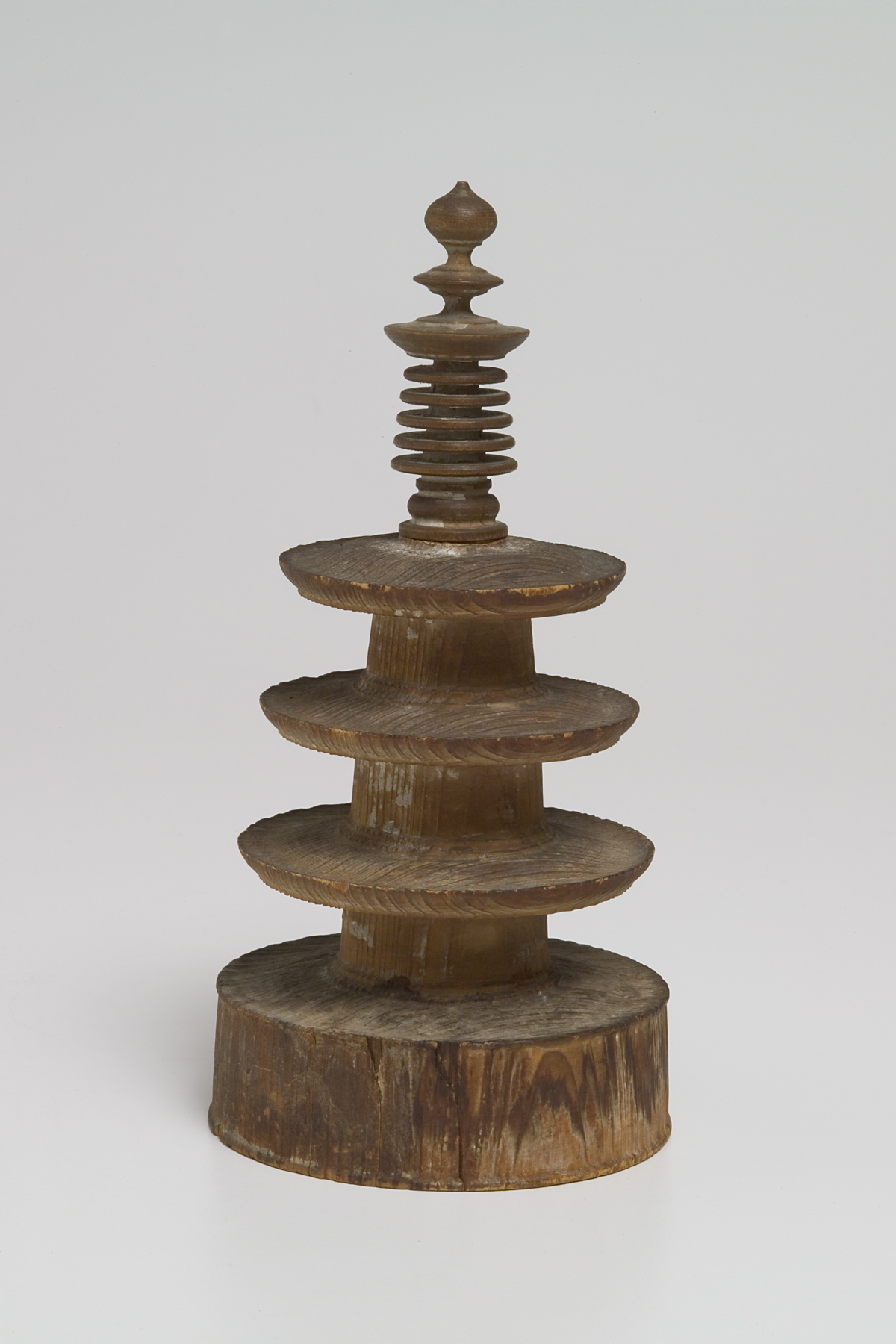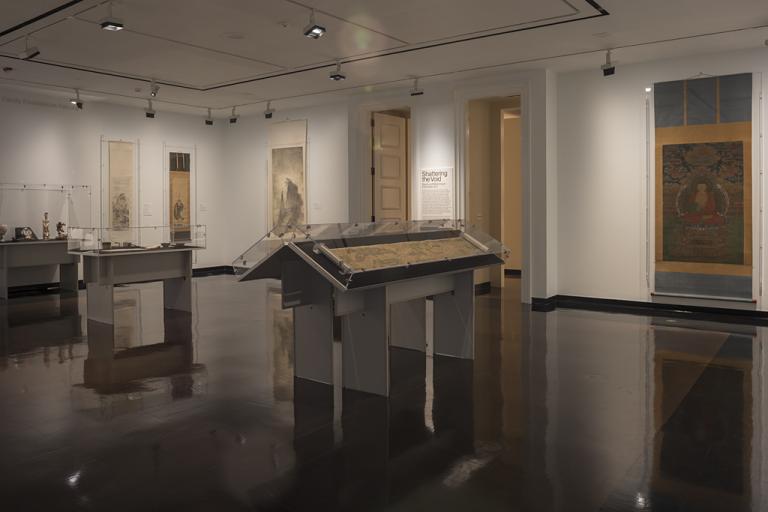Hyakuman-tō (three-tiered pagoda), unknown maker from Japan
Artwork Overview

Object Height/Diameter (Height x Diameter): 21.1 x 10.5 cm
Object Height/Diameter (Height x Diameter): 8 5/16 x 4 1/8 in
Weight (Weight): 8 oz
If you wish to reproduce this image, please submit an image request
Images
Label texts
This is a wooden model of a pagoda, a multi-tiered tower usually associated with Buddhism in Japan. In the eighth century, a Japanese empress had one million small wooden pagodas made to give thanks to the Buddha for a military victory. Each pagoda contained a rolled piece of paper with a darani—a printed protective incantation. The one million pagoda models, known as the hyakuman-tō, were then distributed to ten major temples across Japan. This example is most likely a later reproduction meant to evoke the one million pagoda story.
This is a wooden model of a pagoda, a multi-tiered tower usually associated with Buddhism in Japan. In the eighth century, a Japanese empress had one million small wooden pagodas made to give thanks to the Buddha for a military victory. Each pagoda contained a rolled piece of paper with a darani—a printed protective incantation. The one million pagoda models, known as the hyakuman-tō, were then distributed to ten major temples across Japan. This example is most likely a later reproduction meant to evoke the one million pagoda story.
In the Buddhist tradition, full-size pagodas function to house relics, sacred writings, and other treasures. This miniature pagoda from Japan is modeled after one of the Hyakuman-tō (One Million Pagodas) commissioned by Empress Shōtoku (718–770) as an offering to the Buddha for the protection of the capital during the rebellion of Emi no Oshikatsu (Fujiwara no Nakamaro) of 764. Following their completion in 770, the pagodas were dispersed in sets of 100,000 to each of the ten main temples in Japan: Daianji, Kōfukuji, Gangōji, Yakushiji, Hōryūji, Saidaiji, Tōdaiji, Kawaradera, Sūfukuji, and Shitennōji. At present, only about 40,000 pagodas remain, many of which are located at Hōryūji.
This particular pagoda consists of a base below three stories and a spire (sōrin). Because the sōrin at the top was later glued to the body of this pagoda, it is unknown if there is anything inside it. Each one of the original Hyakuman-tō pagodas had a chamber inside the body where written protective incantations, known as darani, were placed. These written incantations are considered “Dharma relics” and are thought to be as sacred and miraculous as the Buddha’s corporeal remains. The dedication of Hyakuman-tō within the sacred spaces of temples provided peace and protection of the realm.
Text by Emily Cowan
Exhibition Label:
"Compassionate Beings: Japanese Buddhist Art," Sep-2009, Kris Ercums
In the eighth century, a Japanese empress commissioned one million small wooden pagodas, each containing a rolled piece of paper with a darani, a printed protective incantation. The empress commissioned this set of pagodas, known as the hyakuman-tō, in offering to the Buddha for protecting the capital from invaders. The one million objects were distributed to ten major temples, only one of which still possesses remains of the small structures. Although the finial of this pagoda is glued to the base, restricting access into a possible inner chamber, similarities to other hyakuman-tō indicate that it may be part of the set of one million pagodas made in the eighth century.
Exhibition Label:
“The Sacred and the Secular: Buddhist Imagery in Religious and Popular Contexts,” Oct-2005, Hillary Pedersen
In the eighth century, a Japanese empress commissioned one million small wooden pagodas, each containing a rolled piece of paper with a darani, or protective incantation, printed upon it. The empress commissioned this set of pagodas, known as the hyakuman-tō, in offering to the Buddha for protecting the capital from invaders. The one million objects were distributed to ten major temples, only one of which still possesses remains of the small structures.
Although the finial of this pagoda is glued to the base, restricting access into a possible inner chamber, similarities to other hyakuman-tō indicate that it may be part of the set of one million pagodas made in the 8th century.
Exhibitions
Rachel Straughn-Navarro, curator
Rachel Straughn-Navarro, curator
Rachel Straughn-Navarro, curator
Sherry Fowler, curator
Kate Meyer, curator
Emma Scioli, curator
Paul Stock, curator
Kate Meyer, curator
Sherry Fowler, curator













